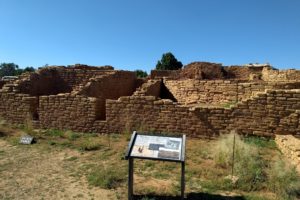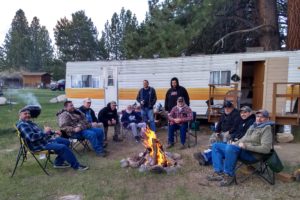Our planned destination for the day is the Point Prim Lighthouse, whose lightkeepers kept watch on the harbor into Charlottetown from 1845 until 1969 (when automation took over), but of course we enjoyed some other places along the way.

We’re on the eastern third of Prince Edward Island (PEI). While we originally wanted to get to the lighthouse on the northern tip of the Island, we decided not to drive so much and go to a closer lighthouse (I’ve circled it on this map) overlooking the Hillsborough Bay cove for Charlottetown. Later today we’ll have lunch at the inlet Murphy River (noted on the lower right side of the map). But that’s another story.



Orwell Corner
While driving, we saw a sign for Orwell Corner’s historic homestead, so we drove in to see what the sign was all about.



Since we weren’t planning on stopping here, we really weren’t that disappointed.


another picture road sign


Want to see the lighthouse again?

history of the lighthouse
Inside the entrance to the lighthouse, we saw these signs documenting the origins of the lighthouse. It was built in 1845, the first (and therefore the oldest) lighthouse on PEI, and is 1 of only 3 round brick lighthouses in Canada. Early in the 19th century as sea trade between Canada and Europe increased, so did the disasters at sea. Charlottetown’s growth required more goods and services that required more shipping traffic, and the number of shipwrecks along the coast increased too.

Finally all decided that Point Prim was the best place for navigating the Northumberland Strait.
Prominent architect, Issac Smith who had designed Government House in Charlottetown and later design Province House, drew up plans for the lighthouse tower.

This trip was 13 miles across the frozen bay and took almost 1.5 hours, a good run for winter travel over a frozen ocean.

lightkeepers
From 1845 to 1969, only 11 lightkeepers kept the lighthouse working to save lives and cargoes.



The lighthouse wasn’t tended during the winter months since the Northumberland Strait was frozen solid, but during WW2 it was kept open since the air force used it as a navigational landmark.

Let’s look at Norman Gillis (I’ll tell you why soon). He was born and raised on Point Prim. He loved farming more than lobstering and bought a farm here after WW2. During a lightkeeper transition, he graciously served a 6-month term until a permanent keeper was commissioned.
The lighthouse was automated in 1969 so lightkeepers were no longer needed.
the light
The lighthouse was built from stone and Island brick that Issac Smith thought would stand up to the harsh climate. The brick was made on-site and the base stone was brought in from Nova Scotia. After the first winter, however, the winter winds and snow were too much for the soft brick, and the whole lighthouse was covered in cedar shingles in 1847.

See the 3 lamps in the bottom, right corner of the sign? They were the original lights for the lighthouse. More about them later.
The flat glass (we call it plate glass) was to be of superior quality and consistency so the light wouldn’t be distorted or ineffective. The top dome was covered with spouts to drain off water and funnels to carry away smoke from the lamp stove. The funnels also guarded against moisture and soot lodging against the windows and obscuring the light.
The first lighthouses were bonfires on the harbor entrances. Later towers were built and fires constantly burned. The light from these fires guided ships by night, and the smoke from the fires guided ships by day.
distinguishing lighthouses and fog horns
Lighthouses during the day could be distinguished by their shapes and sizes, and later by how they were painted. On a clear day mariners at sea could orient themselves by these shoreline towers.

And this is Noah who greeted us when we walked into the lighthouse to see its displays. He is the great grandson of Norman Gillis we saw in the list of lightkeepers. He’s a high schooler who has lived all his life in this area and wants to come back here to this lighthouse to work after college. A personable young man, he gave us lots of information.

displays inside the lighthouse
Remember when I pointed out the 3 lamps in the bottom of a picture that were the original lighthouse lights? This is the original 4th lamp that was a backup if one of the other lamps failed or needed to be fixed.


They donated it back to the organization that restored the lighthouse to its beautiful condition. Glad it got back home.
why do lobsters need a gauge?


a PEI industry
Irish moss was first gathered off the coast of PEI in the 1930s and grew into a multimillion-dollar industry in just a few decades because of a demand for carrageenan that can be extracted from the harvested moss. Carrageenan has gelling and stabilizing properties that are needed in such products as beer, toothpaste, ice cream, and other dairy products. It is also responsible for preventing large ice crystals to form in ice cream, as well as thicken puddings.

nice-looking couple

outside information
Lighthouses weren’t a common feature on the Island’s intricate coastline for a long time. Before 1845, PEI’s intricate coastline lacked these structures, making navigation challenging. Merchants and shipowners continually faced the worry of a shipwreck, as were those in the fishing industry.
Coastal communities were also affected by the fear of shipwrecks, especially in Nova Scotia. In the early 1800s, its government erected a number of lighthouses and asked nearby colonies to contribute money for their constructions and maintenance since they would also be benefiting from the lighthouses.


a lighthouse for PEI
Petitions for a PEI lighthouse began in the late 1830s but didn’t get very far since the government was already sending money to Nova Scotia for their lighthouses and they only had so much money. American neighbors weren’t interested either.

The Island is also grappling with how to communicate with the outside world through mail. Before 1832, the masters of sailing vessels were paid by the government to carry mail to and from the Island and the mainland. But this method was inconsistent, and a steamboat was needed.

Prominent merchants, shipowners, barristers, and politicians pooled their money and, along with a hefty government investment, started operating a steamboat to take over mail delivery.
During the winter months, contracted individuals used iceboats to carry mail across the Northumberland Strait. These iceboats worked fine in open water, but the sailors found it dangerous when the boats had to be hauled over ice flows by hand.


These new steamboats were expensive to maintain, and the PEI Steam Navigation Company continually operated at a loss–but it still had enough clout to make its presence and preferences known.

With the influence of the company’s influential members, funds were set aside and a survey team was formed—featuring a number of prominent shareholders. The lighthouse was going to be built!
For the 1864 Charlottetown Conference that we’ve already talked about, 3 different vessels came around the curve of the Island toward Charlottetown bringing delegates from Nova Scotia, New Brunswick and Canada (Ontario and Quebec).


By this time, Point Prim lighthouse had been serving the community for almost 20 years.


looking out again

You may wonder why we don’t have more pictures of the sea to show you. It’s because every picture would look basically the same: shore, sea, and sky.
sea glass
We had heard of sea glass from our KOA host, but really didn’t know what it was or what it was for. At the lighthouse gift shop were some necklaces and other pretties made from sea glass.


Sea glass is glass that has been discarded and broken on the beach here at PEI. Over time, the sandstone and motion of the surf tame its sharp edges and shiny surfaces, creating a patina (a thin layer that forms on the surface through age and exposure).
Years ago many local farming families had their own dump sites away from their homes, usually near the coast, where they’d discard bottles and broken glassware. Over the years, erosion has exposed some of these sites, washing them into the ocean. Also ships would discard their bottles into the Hillsborough Bay (where Charlottetown is) where they’d be carried onto the shoreline with the tide.

The color of the sea glass depends on the bottle it came from.
- Dark olive green was likely from old rum bottles brought here from the Caribbean islands during prohibition. Its dark glass blocked the sunlight.
- Brown glass was from Canadian beer bottles.
- Brighter green and white glass is usually from pop bottles.
- Cobalt blue is from old Noxzema, Milk of Magnesia, or medicinal bottles
- Lavender or pink is very old white glass.
- White glass from before the turn of the century was made with Magnesium that over time oxidizes and turns white or pink.
- Red glass is from old buoys or taillights.
I’m sure you noticed the flipflops in the background of the previous picture and probably wanted to see it up close.

onward
As we drove eastward from the lighthouse, we saw this sign.


We were getting hungry, so when we drove past this cute, little restaurant with cars still out front at 1:30, we turned around and went in.




menu board

And here it is. It tasted so much better than it looks here.

But it’s the bacon I want to talk about. Even though it doesn’t look like it’s crispy, it’s now on my list of “best evers” since it’s the best bacon I’ve ever had!
Our KOA host had told us that PEI farmers start feeding apples to their pigs a month before they’re slaughtered, making their products very sweet. This piece of bacon was indeed sweet. I wanted to ask for more! Barney, can we go back?
harbor views to the ocean


On our way home using an inland route, we saw these hay rolls that have been enclosed to keep them protected and intact during the winter. These covered hay rolls are everywhere on the Island.

We only have 1 more day on Prince Edward Island before taking the ferry for Nova Scotia. Tomorrow we’ll learn so much more history of Charlottetown from an area overlooking Charlottetown harbor that was the site of a French fort.




